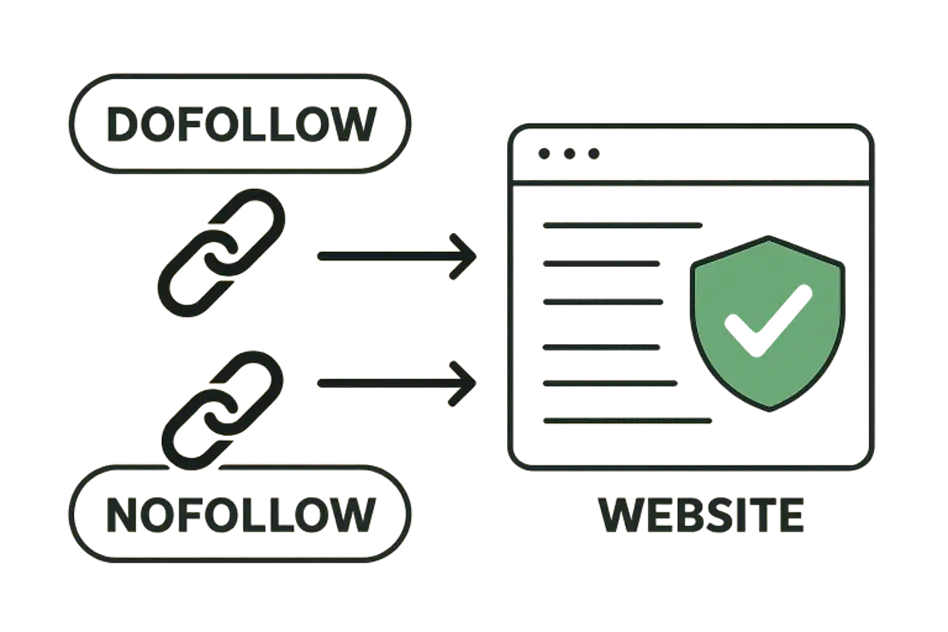Why Link Diversity Matters in SEO
Building a healthy online presence requires more than just amassing as many backlinks as possible. The true strength of your website comes from the quality, variety, and authenticity of those links. Modern search engines scrutinize a site’s complete backlink profile to determine legitimacy and authority. This is why a natural portfolio with both dofollow and nofollow backlinks helps increase your credibility and competitiveness in search results. A clear understanding of the difference between nofollow and dofollow backlinks is crucial for anyone seeking to develop a comprehensive SEO strategy.
An organic backlink profile reflects interaction from different sources—blogs, news sites, forums, or social channels—each signaling your site’s authority from multiple angles. The diversity in link types reassures algorithms that your website genuinely deserves its place in the search rankings, rather than manipulating results through a single methodology.
Quick Definitions: Dofollow vs. Nofollow Links
Before diving deeper, it helps to clarify the fundamental differences:
- Dofollow backlinks: By default, these links instruct search engines to crawl and consider the destination page, passing along ranking value.
- Nofollow backlinks: These incorporate an attribute signaling search engines not to pass on ranking credit, though they still indicate a relationship between the sites.
Both link types influence search engine perception by mapping out the network of relevant and valuable sources referencing your site.
The Hidden Value of Nofollow Backlinks
Nofollow links might seem less valuable at first glance since they don’t directly influence search rankings. However, top-tier platforms, such as Wikipedia, mainstream media, and widely used social networks, use nofollow attributes extensively. Yet, links from these sources still build brand trust, send referral visits, and boost visibility across broader audiences. According to Search Engine Land, understanding the role of nofollow links in SEO can help clarify why they still hold strategic value in a well-rounded link-building approach.
Over time, the accumulation of nofollow backlinks can diversify your link profile, increase your website’s resilience against algorithm updates, and attract targeted visitors who may then cite or share your content on their own platforms.
Why Dofollow Backlinks Remain Essential
Dofollow links are especially prized because they directly influence search ranking and authority signals. Earning a dofollow backlink from well-respected websites is a validated endorsement in the eyes of Google and other search engines. Such links can significantly enhance your site’s organic ranking power. However, a profile dominated exclusively by dofollow links can look manipulated. Search engines prize authenticity; a sudden or unnatural influx of dofollow links can arouse suspicion and potentially trigger penalties.
How a Natural Backlink Profile Looks
A truly healthy link profile displays:
- A natural mix of dofollow and nofollow links
- Links from relevant industry blogs, community forums, and reputable directories
- Diverse anchor text, blending branded, keyword-rich, and generic phrases
- Referral links from both authority sites and emerging blogs
This blend ensures your backlink strategy appears organic, bolstering your site’s long-term credibility and performance. A balanced backlink profile is a core factor in white-hat SEO success.
Common Mistakes to Avoid
Many website owners either overlook nofollow links completely or chase dofollow links with aggressive tactics—like buying links—which violates Google’s guidelines. Relying on quick fixes or focusing on one link type undermines your site’s reputation and can drastically harm visibility. The most sustainable approach is to focus on authentic, value-driven content and natural relationship-building.
Effective Tactics for Gaining Quality Backlinks
To cultivate a strong, mixed backlink profile, employ proven, white-hat strategies:
- Guest post on established, relevant industry blogs
- Gain coverage or citations in news articles and research studies
- Become an active participant in trusted online communities and forums
- Publish original, data-backed resources that others reference
- Develop genuine relationships with journalists, thought leaders, and fellow content creators
This approach naturally attracts dofollow and nofollow links, broadening your reach and strengthening your online presence.
Maintaining Link Health: Use Tools and Analytics
Ongoing analysis is critical. SEO tools allow you to monitor your backlink acquisition, spot unusual spikes or drops, and stay on top of your dofollow/nofollow ratio. If irregular link patterns emerge, quick investigation and course-correction will protect both your rankings and your site’s reputation.
Final Thoughts
Creating and maintaining a healthy link profile is never about shortcuts or single-minded strategies. Instead, strive for a balance: cultivate both dofollow and nofollow backlinks by providing real value and engaging meaningfully with your digital community. By embracing link diversity and adhering to search engine best practices, your site will establish lasting authority and enhance its search visibility in evolving algorithmic landscapes.
Also Read-Why Tech-Savvy Designers Are Turning to Virtual Tools for Better Results








